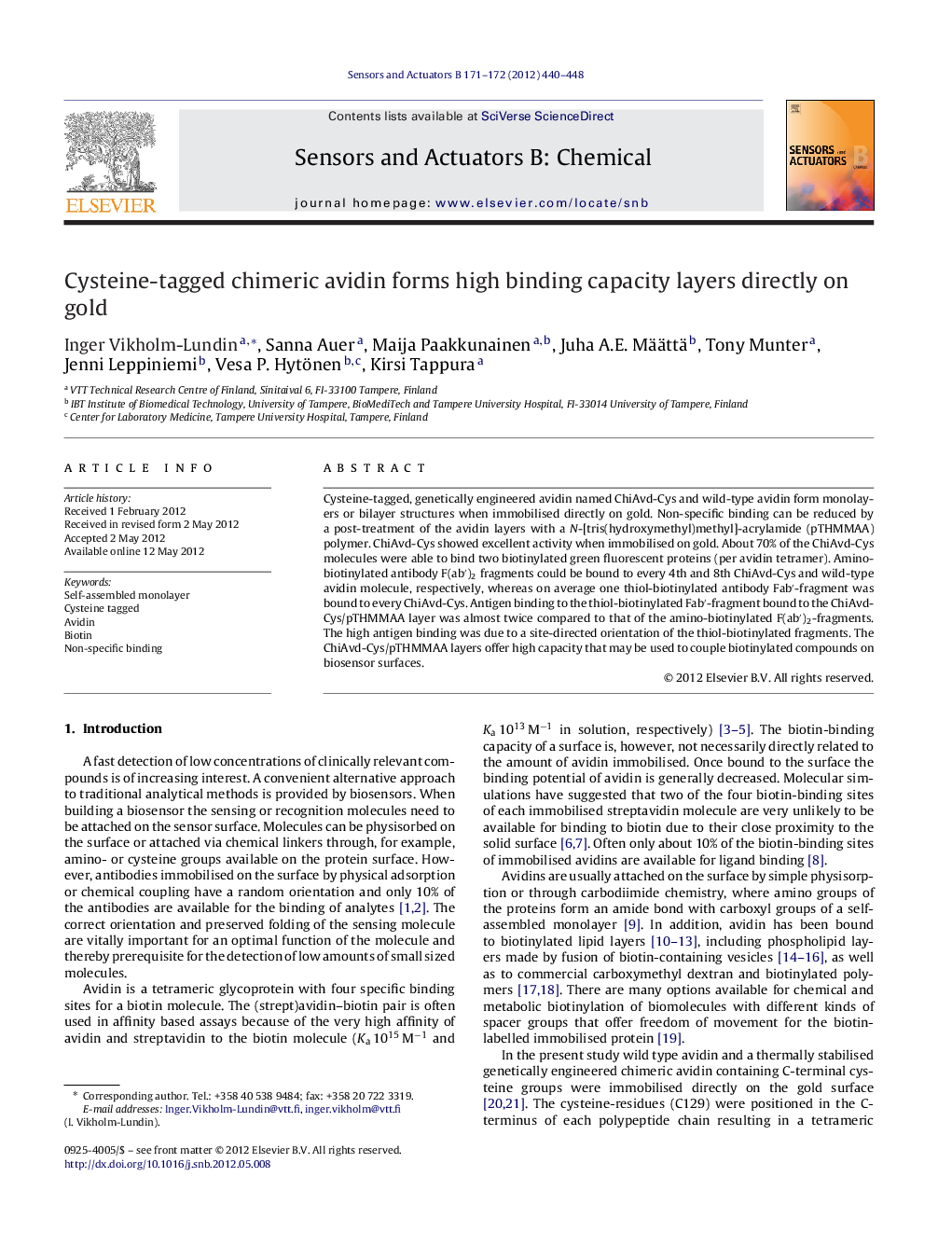| Article ID | Journal | Published Year | Pages | File Type |
|---|---|---|---|---|
| 745491 | Sensors and Actuators B: Chemical | 2012 | 9 Pages |
Cysteine-tagged, genetically engineered avidin named ChiAvd-Cys and wild-type avidin form monolayers or bilayer structures when immobilised directly on gold. Non-specific binding can be reduced by a post-treatment of the avidin layers with a N-[tris(hydroxymethyl)methyl]-acrylamide (pTHMMAA) polymer. ChiAvd-Cys showed excellent activity when immobilised on gold. About 70% of the ChiAvd-Cys molecules were able to bind two biotinylated green fluorescent proteins (per avidin tetramer). Amino-biotinylated antibody F(ab′)2 fragments could be bound to every 4th and 8th ChiAvd-Cys and wild-type avidin molecule, respectively, whereas on average one thiol-biotinylated antibody Fab′-fragment was bound to every ChiAvd-Cys. Antigen binding to the thiol-biotinylated Fab′-fragment bound to the ChiAvd-Cys/pTHMMAA layer was almost twice compared to that of the amino-biotinylated F(ab′)2-fragments. The high antigen binding was due to a site-directed orientation of the thiol-biotinylated fragments. The ChiAvd-Cys/pTHMMAA layers offer high capacity that may be used to couple biotinylated compounds on biosensor surfaces.
